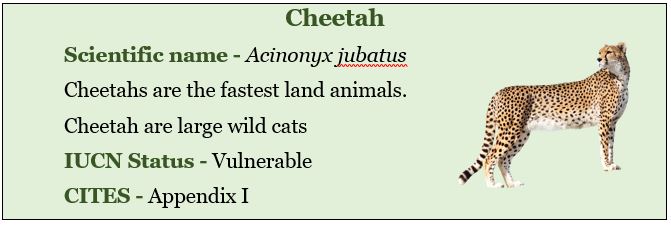7667766266
enquiry@shankarias.in
Recently, 1 year anniversary of India’s cheetah reintroduction programme was observed with the 1st batch of 8 cheetahs from Namibia arrived on September 17, 2022.

To know more about Cheetah reintroduction programme, click here
Status of Project Cheetah
Cheetahs are a low-density species, existing at best at 1-2 per 100 sq km and with a unique spatial ecology. The introduced cheetahs will need about 5,000 sq km of good-quality habitat to establish a viable population in India.
Quick Facts
Action Plan for Cheetah Reintroduction in Indian States
References